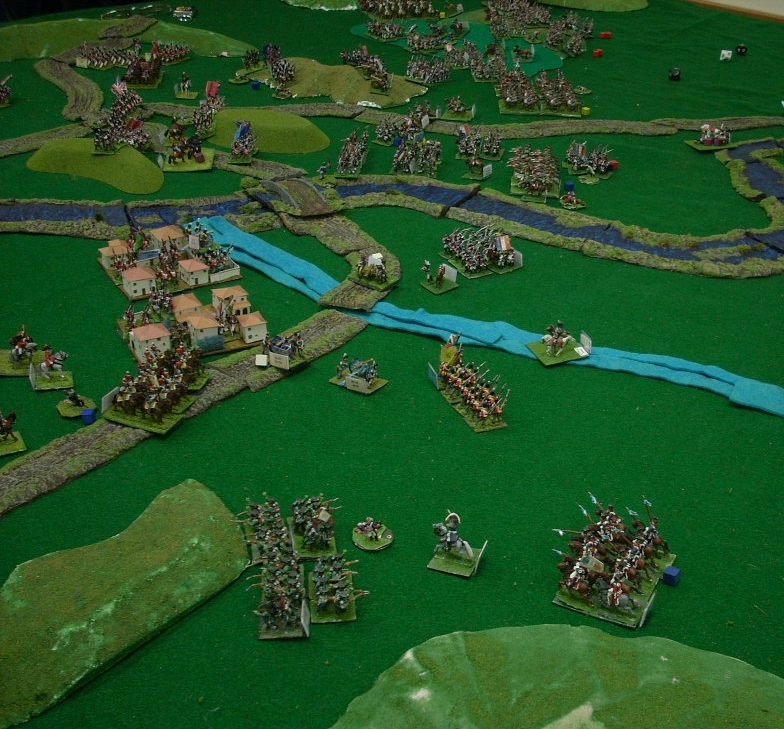
General Wellesley
36,960 infantry, 3520 cavalry, 40 artillery
Battle of Valladolid
July 14th, 1809
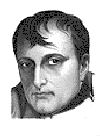
Emperor Napoleon
54,240 infantry, 9600 cavalry, 72 artillery
|
General Wellesley |
Battle of Valladolid
|
54,240 infantry, 9600 cavalry, 72 artillery |
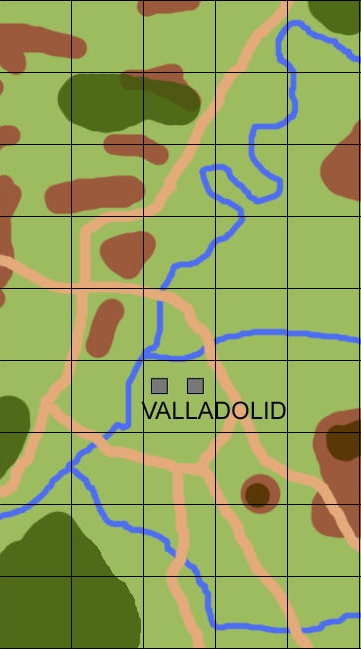
Following his defeat at Burgos on the 8th, Wellington commenced to fall his army back behind the Dowro River, seeking for the few replacements at Tordesillas. When two Corps of the French reached Valladolid, the capital of Old Castile, Wellington determined instead that he would need to make a stand there. There was a hope that the Spanish might appear on the French eastern flank or that Napoleon's army would be unprepared for the strong defence and not be able to muster his whole army to Valladolid. Besides which, Wellington had learned some valuable lessons at the battle of Burgos and he considered himself better prepared to fight with this army that he had. True, 30,000 Portuguese and 5,000 Spanish had surrendered when the fortress at Burgos capitulated but those low quality troops only stretched his army out too much in any case. No, this time it would be the British standing alone and they would be on the defensive.
At the start of the battle, Wellington had only four divisions but he had confidence that four more would arrive, including Cotton with his cavalry. The plan was to employ reverse slope techniques on the left to minimize the anticipated French artillery advantage. Hamilton, originally with only Hill's division, would occupy the town of Valladolid and defend it as long as they were able. The line of streams would contribute to the defensibility on this flank.
For the French, the scheme was to try to hook wide right around Valladolid with a small part of Davout's Corps while pressing against the British left with Marmont. Napoleon had just days before sacked General St. Cyr, commander of III Corps for being tardy to the battle of Burgos so when General Kellerman was given command of that Corps, he was certainly given very clear instructions about how quickly he was expected to arrive at the next battlefield.

The battle commenced at 0830 hrs with the French advancing both of their Corps briskly on both sides of the stream. Wellington would have time to get his battle lines prepared. On the left, Spencer's division was made up with five brigades of tough veterans. Crauford had the rifles and the only British cavalry brigade on the field. The bulk of the army's artillery was assigned to Hill since it was believed that the hills on the left would limit its effectiveness.
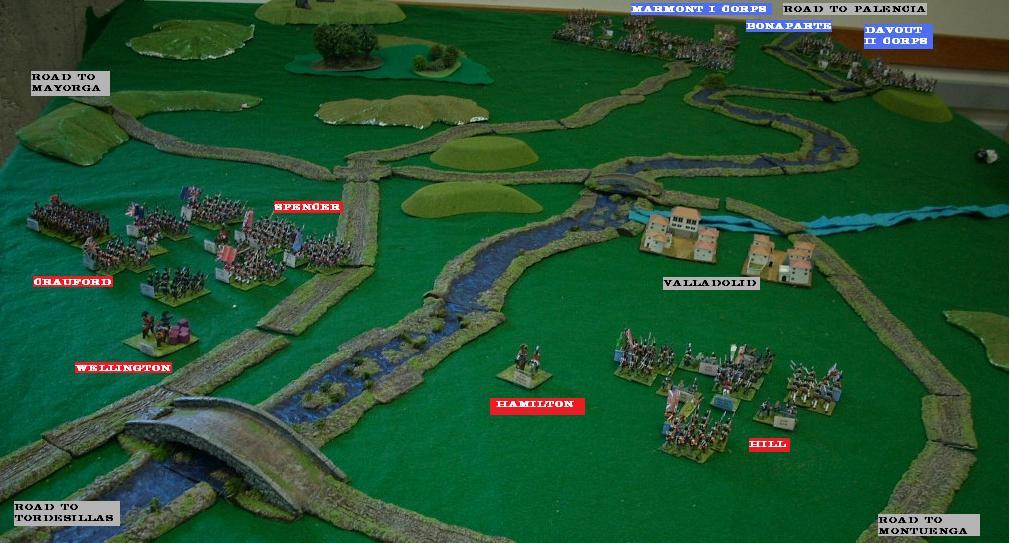
Cotton's cavalry arrives early from Montuenga and Hamilton finds it an excellent counter to Davout's three brigades of cavalry. It turned out that the division selected by the French to attempt a hook around Valladolid would be provisional troops of suspect quality. In the initial artillery contest between Hamilton and Davout, the British would quickly gain the upper hand.
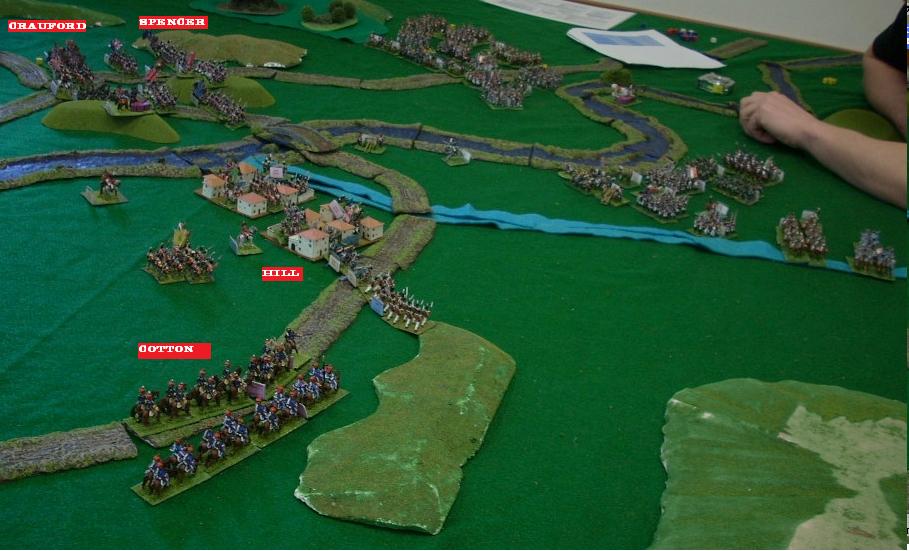
One of several combined arms attacks by Marmont against Spencer's veterans. Wellington would, on at least one occasion, have to ride into the battle to encourage the men to hold the line. All day long Marmont would press against this point in the British line and it would never falter though it was often a very near run thing.
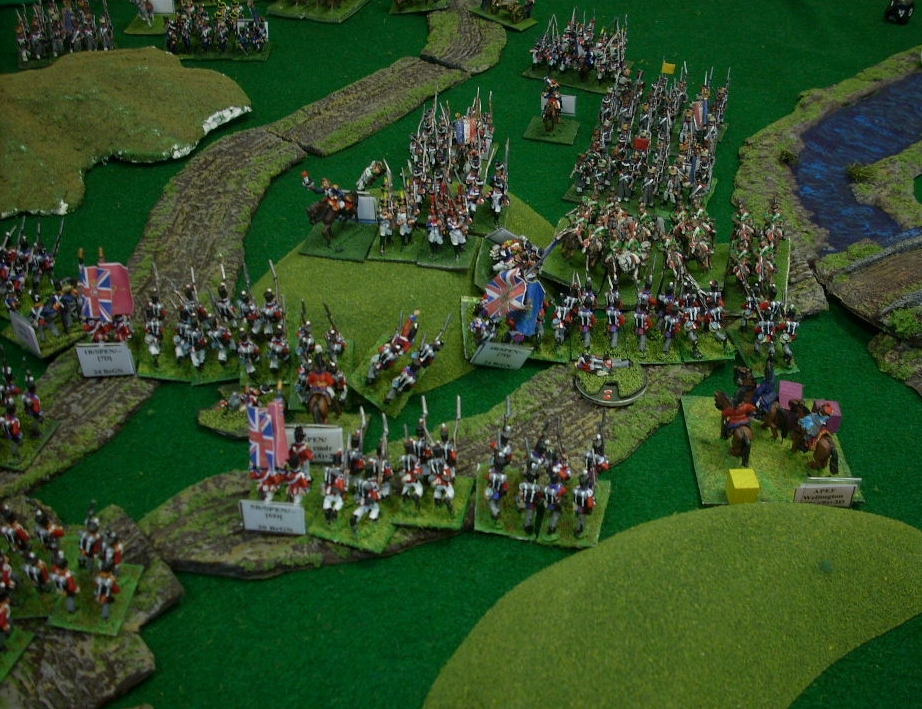
Hill's divisions advance against the French cavalry, firing artillery and musket balls into them at point blank range. The one French attempt at an infantry assault near the town was hurled back by massed artillery.
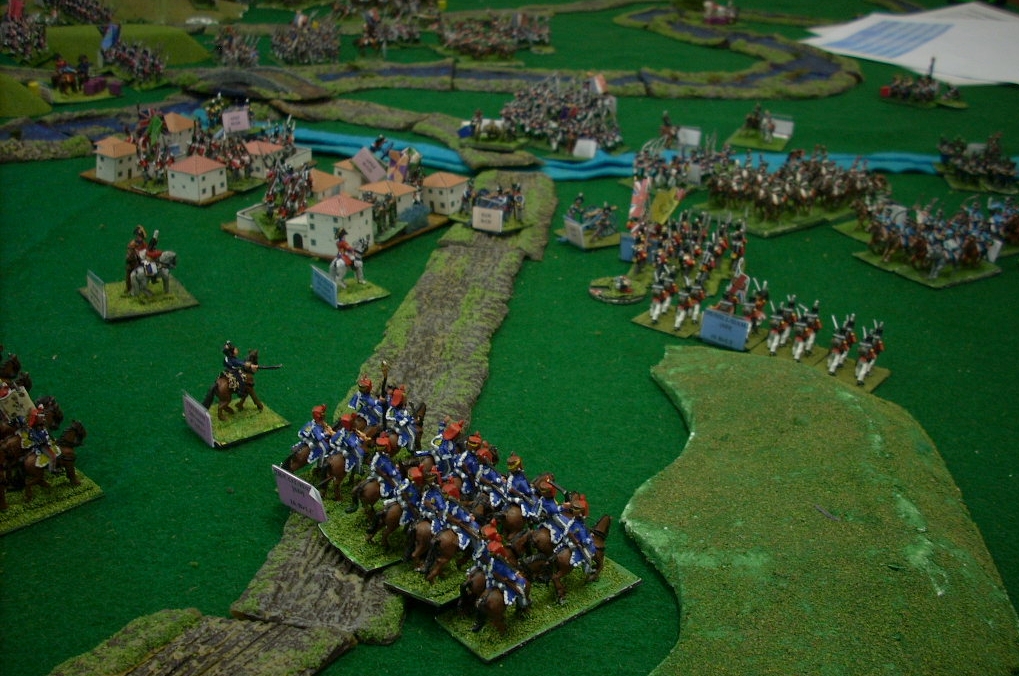
Cole and Picton's divisions arrive but it will be several hours before Picton's highlanders can make any impact on the fighting.
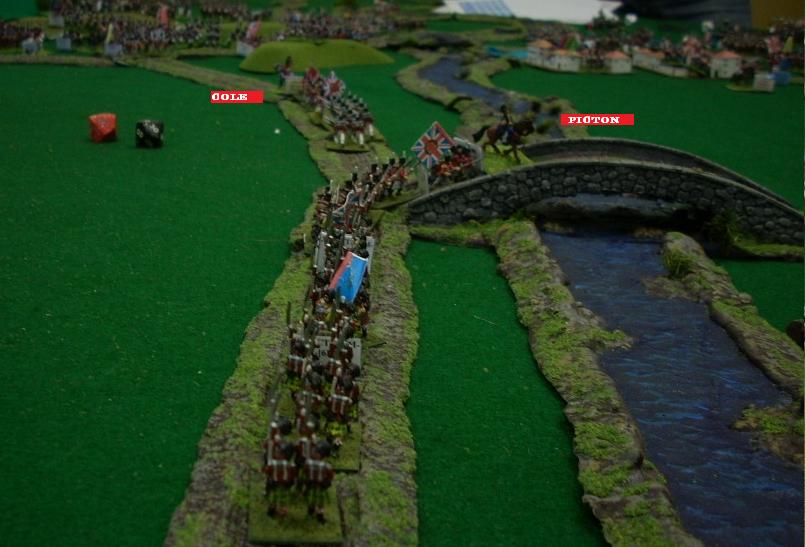
III Corps has arrived for the French and it makes the British reinforcements seem paltry indeed. As well, unlike the British troops, Kellerman brings more cavalry and 25 more artillery pieces. He proceeds to march wide to move against the British far left because Marmont appears to be making little progress in the center. French columns there are bunched up with no room to manoeuvre.
Hopefully the Emperor is not terribly annoyed at how late Kellerman is to the fight.
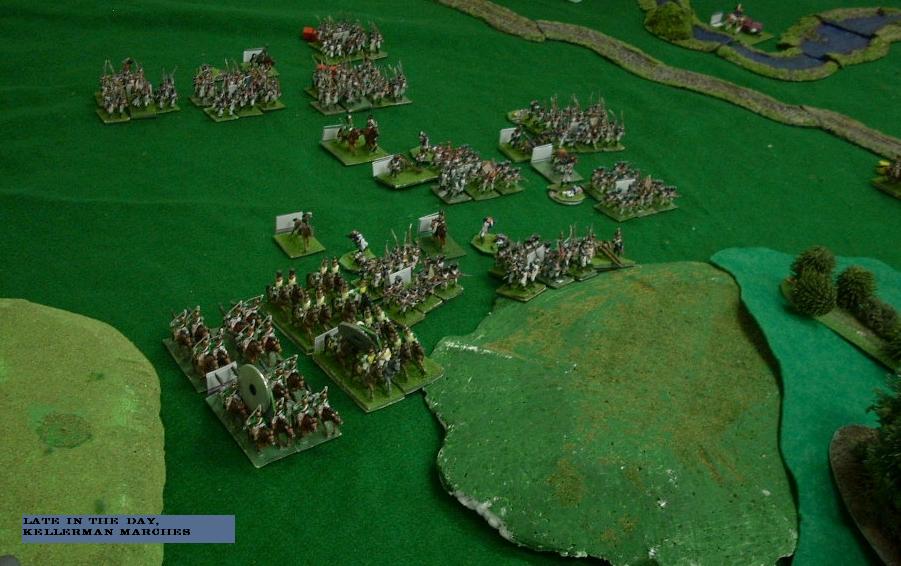
Davout's Corps is exhausted but Hamilton has not the strength or deployment to take advantage of the failing Corps. He will need to wait for Picton before he feels strong enough to advance. The Provisional French infantry on the far left would get no further, being obliged to form square at that spot.
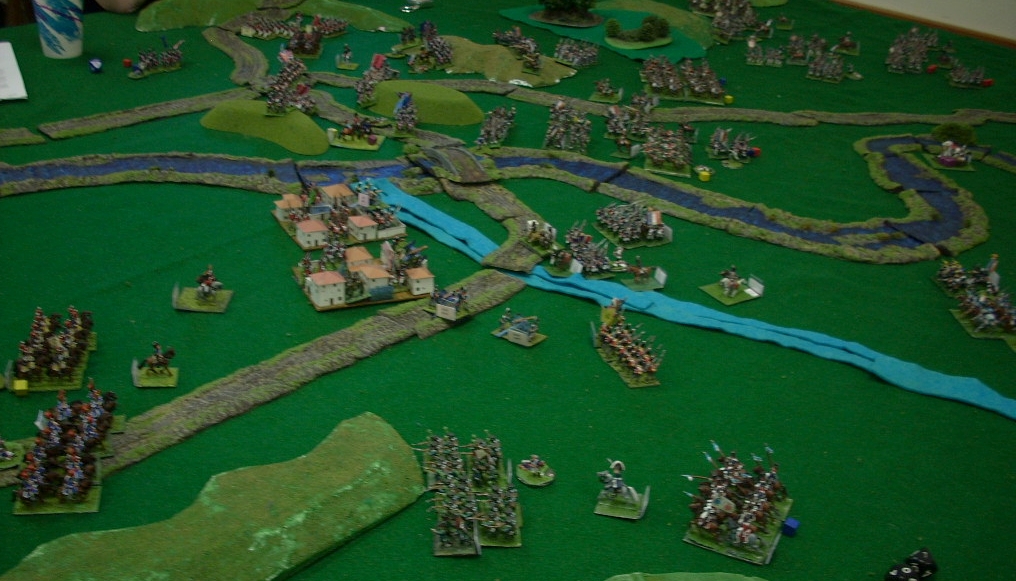
Wellington has maintained his battle line but three of his five veteran brigades would need to be pulled off the line. Thankfully, Crauford is there to relieve the grenadiers and Cole is present to take up positions on the left. The mass of Kellerman is now seen moving through the woods though and there seems to be far too few English men to stand before them. Four heavy batteries of the French are cutting a swath through the British ranks and soon, when the last British battery on the left flank is silenced, Wellington begins to run out of options.
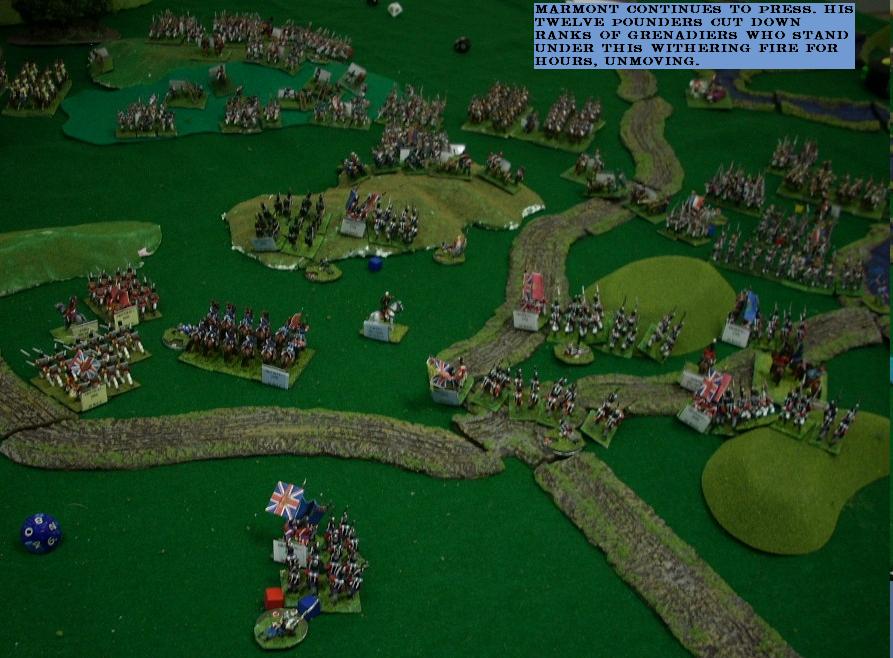
Near to the end game. Hill and Hamilton would march out of Valladolid to assume a late offensive. Picton would lead his howling Highlanders into a devastating charge against the provisional light infantry squares, and Davout's Corps would cease to be a fighting force. The British have held the line on the left but there is no prospect for success should the battle continue. The order is given to retreat to Tordesillas before the situation becomes impossible.
